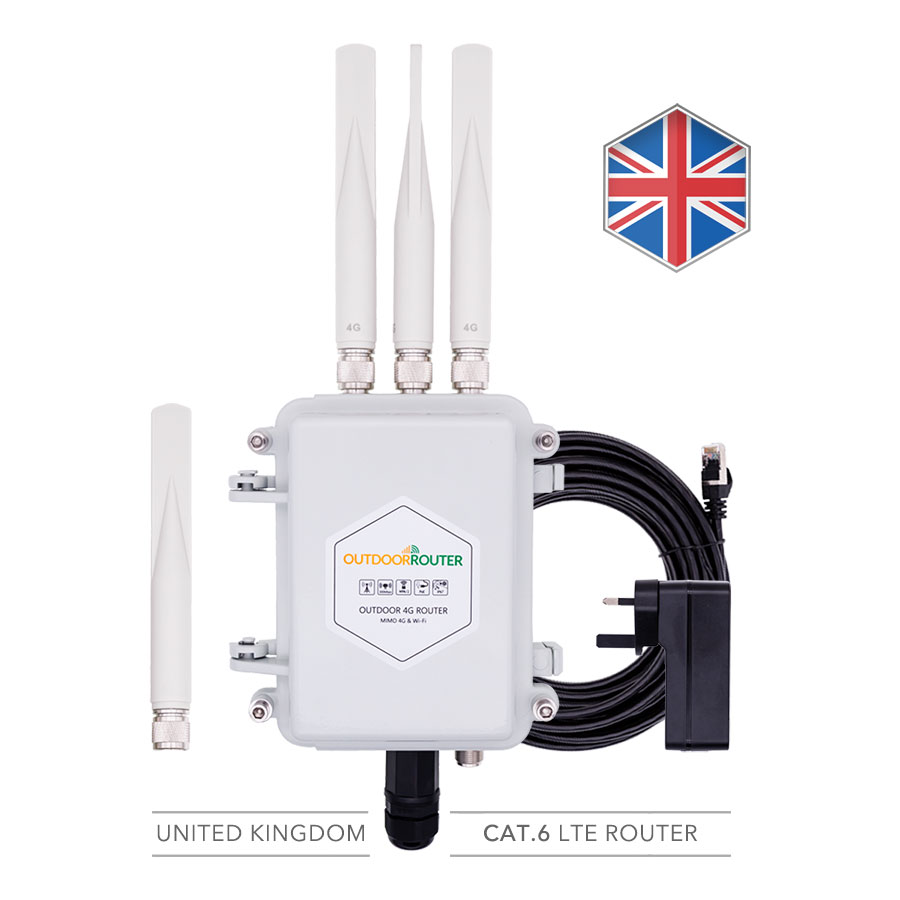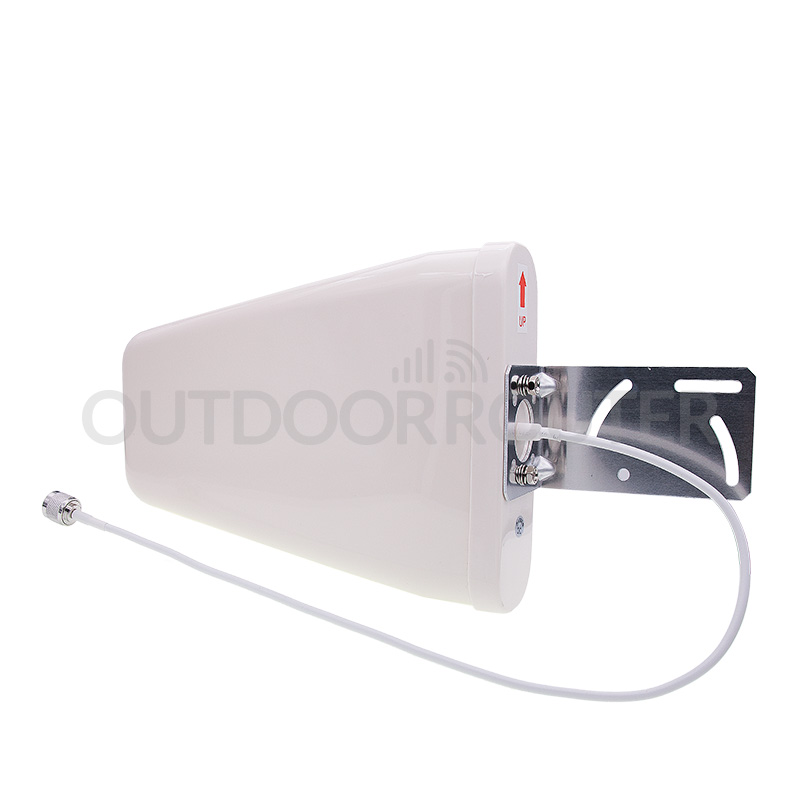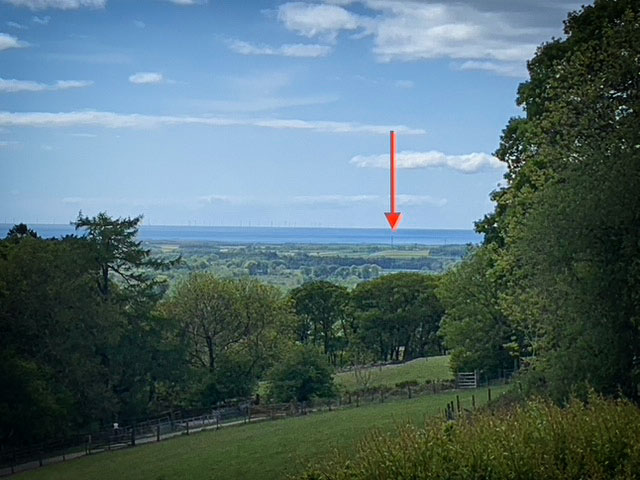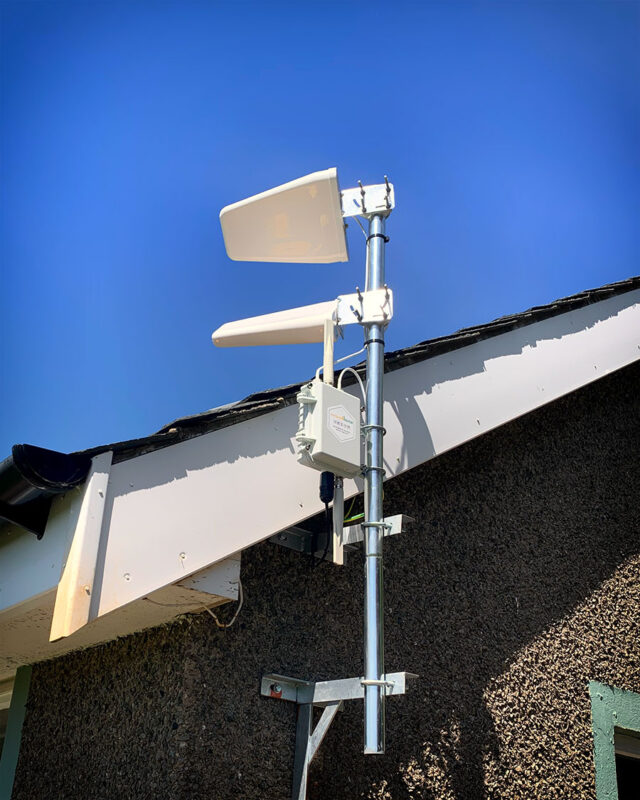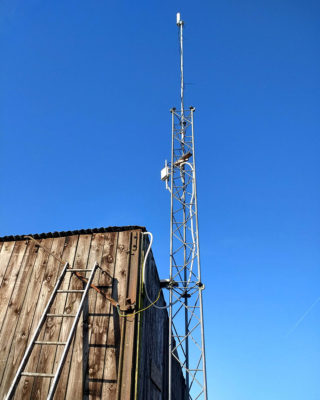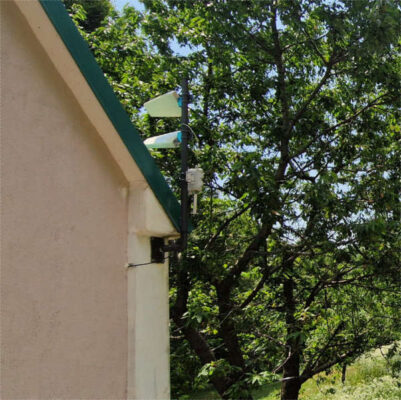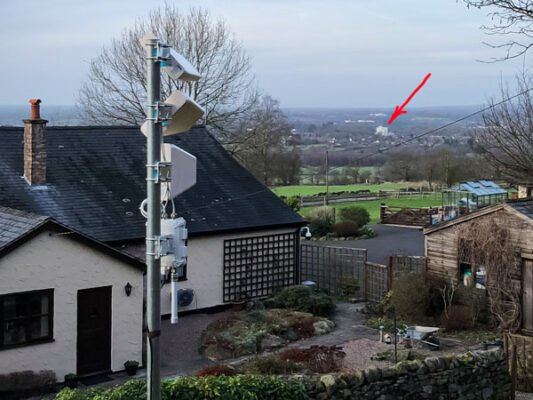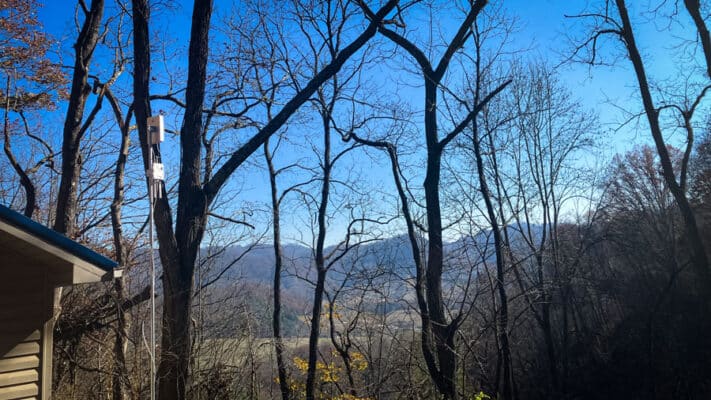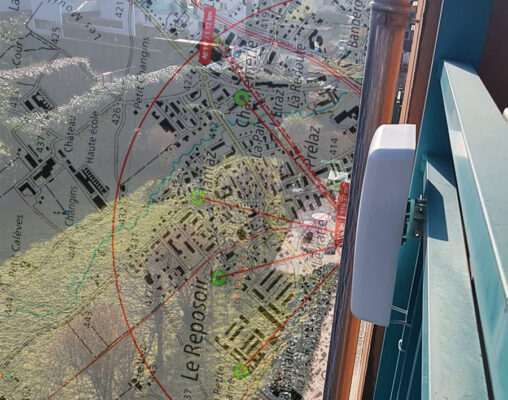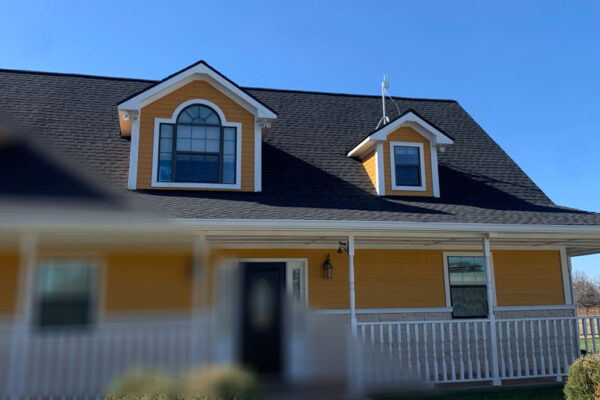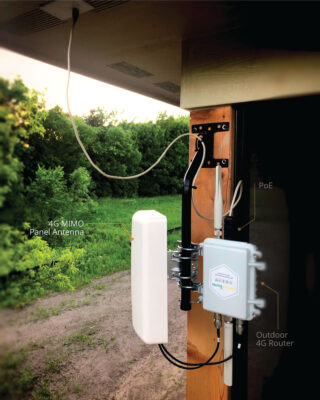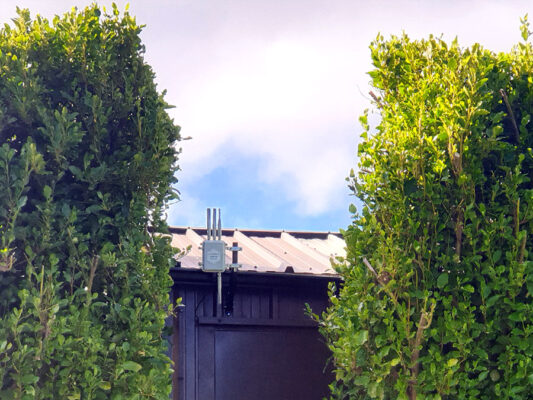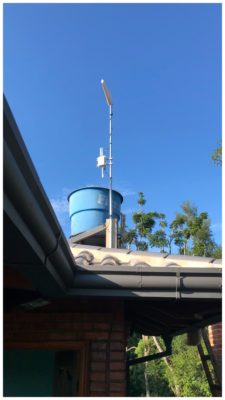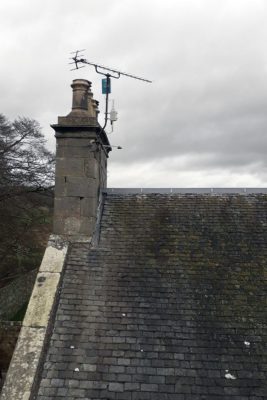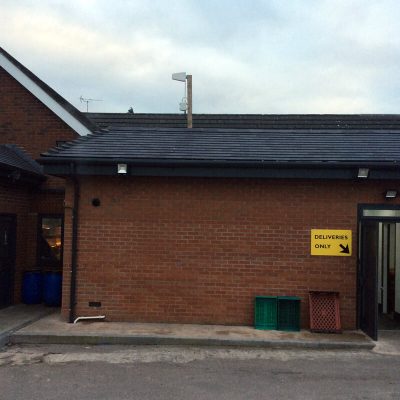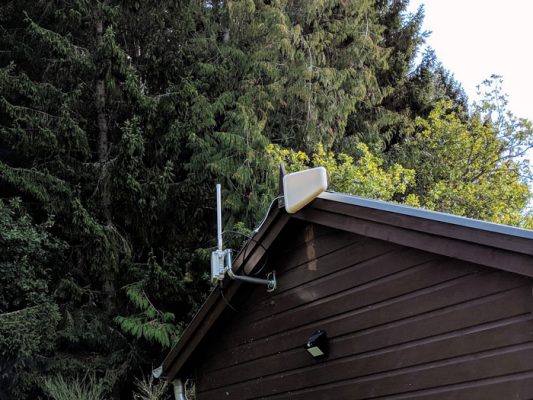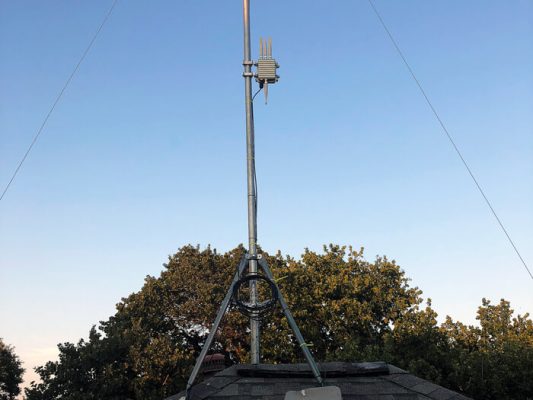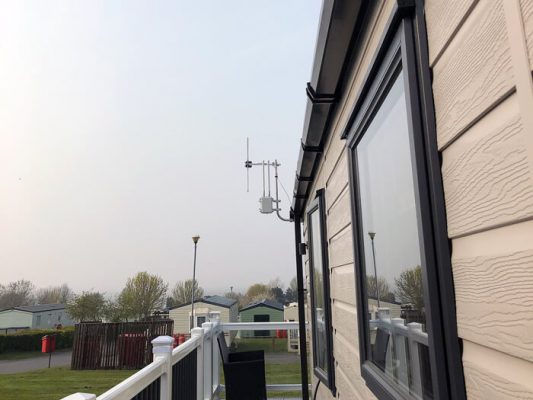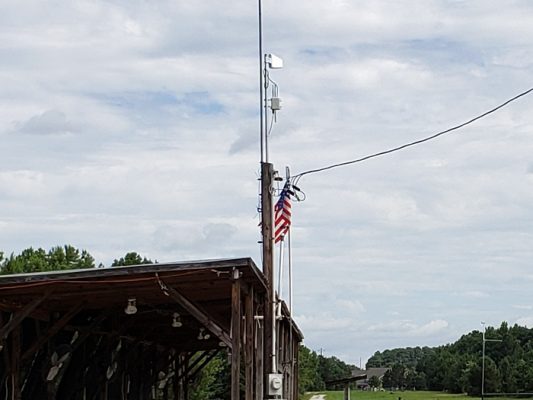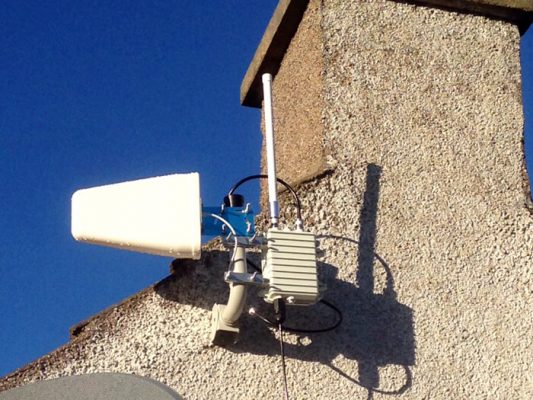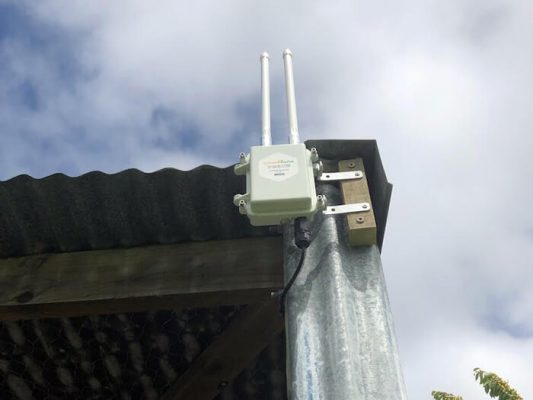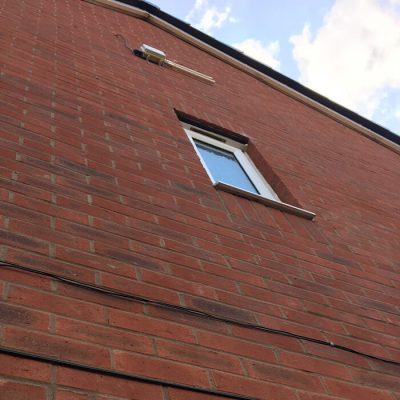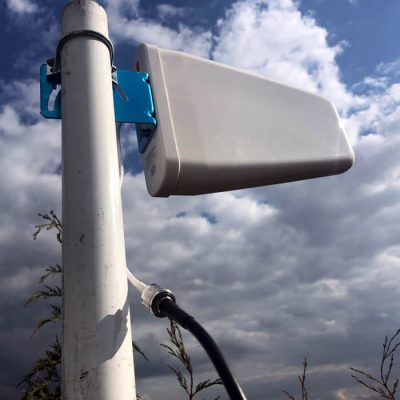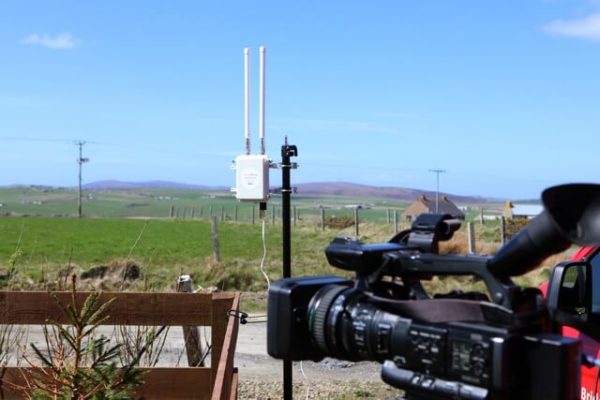This property is in a remote area of the English Lake District. It sits in a deep valley which points east-west. To the East is England’s highest mountain, and to the west, it opens up to the coastal plain.
The Internet was ADSL broadband with typical speeds around 3Mbps download and 0.03Mbps upload, and frequent complete outages are requiring the attendance of the telecoms provider’s engineers.
There is a mobile phone mast on the coastal plain, but it is approximately 10km distant and is only visible along one side of the house. Image of looking east. The arrow marks mast.
Signal strength for a mobile phone outside is worse than -120dBm, and not detectable inside the property ruling out mobile phone tethering.
Using an outdoor 4G router with the directional log periodic antenna (Cat.6 modem with two antennas to support Carrier Aggregation when that becomes available locally), with a mobile data package supporting LTE-A signal, the strength of around -85dBm. This has supported a bandwidth typically of around 25Mbps download and 20Mbps upload.
The router is connected to a single cell on a single tower and so suffers from the intrinsic variability in 4G speeds. However, the lowest experience has been 20Mbps download, and the highest has been a remarkable 70Mbps.
The outdoor router is connected to a Ubiquiti based network using wired, and meshed wireless access points to service the entire farm and property.
This project was implemented by a non-professional – the installation instructions and customer support are sufficient to allow someone with a basic understanding of networking to get the system fully installed and up and working very quickly.
The final installation looks very neat.
OutdoorRouter was a superb partner to work with on this project. The supply of equipment was very rapid. The customer support was excellent, particularly when, due to ignorance about carrier aggregation, I ordered the cat.4 rather than the cat.6 modem, and the equipment itself is the first-rate.

